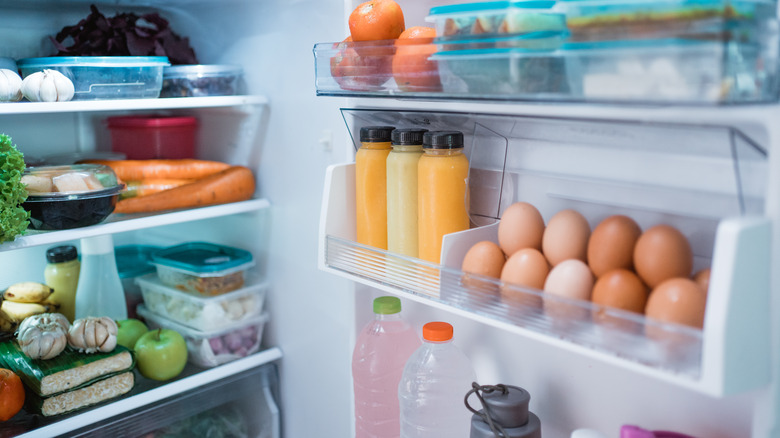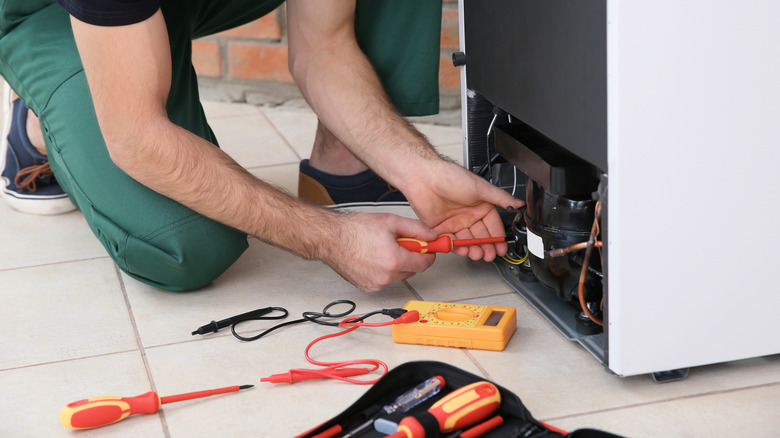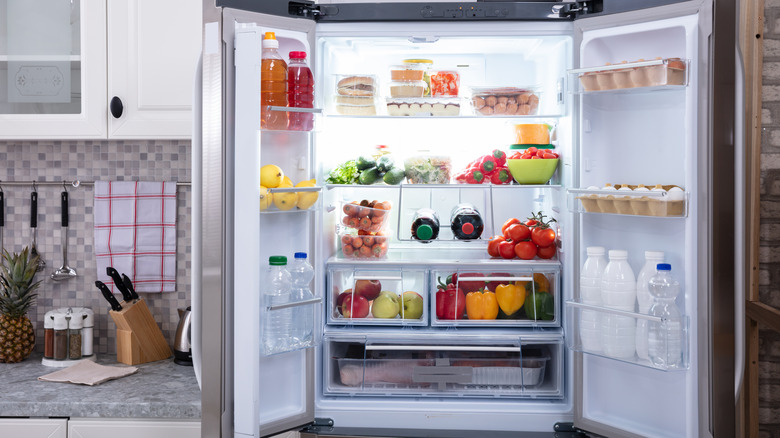Why Stuffing Your Fridge Too Full Could Actually Cost You Money
You might think that a full fridge is a happy fridge, and to an extent, that's correct. But when it comes to your utility bills, having a refrigerator that's jam-packed full of food is probably going to hurt your wallet in more than one way. Too much food means there's no space for air to circulate. If there's no space, that means your refrigerator has to work harder to cool its contents. The end result is an energy spike, which you'll see reflected in your monthly utility bills. In addition, you can expect that your food is also going to be unevenly cooled, which means possible food spoilage, and you guessed it, more money leaching out of your bank account.
Conversely, having an empty fridge means there's too much space to cool. Every time you open the door, cool air escapes, the temperature rises, and your fridge must work overtime to try and maintain a low and consistent temperature. The secret — as with many things — is balance and moderation.
Fridges don't want to be full
When your refrigerator is crammed with an excessive amount of food, it can have detrimental effects on its ability to work properly. Obstructed airflow caused by overcrowded food prevents the proper circulation of cold air. As a result, certain spots within your refrigerator might experience uneven cooling. This uneven distribution of temperature can lead to certain perishable items, like fruits, vegetables, and dairy products, being exposed to warmer temperatures and deteriorating more rapidly, contributing to unnecessary waste.
The accumulation of food in front of or around the refrigerator's air vents can directly hinder the cooling process. The vents are designed to facilitate the flow of cold air throughout the appliance, ensuring that all items inside remain properly chilled. However, when these vents are blocked by excessive food the airflow is restricted. This can lead to costly repairs and even an untimely death of your refrigerator.
How to keep costs down
For the best in terms of economy, it's recommended to keep your fridge at around 3/4 full. This allows for proper airflow and circulation within the refrigerator, ensuring efficient cooling of all your perishables. Having your fridge around 3/4 full also reduces the workload on your fridge, meaning it should last longer, and keeps your utility costs affordable.
If your refrigerator is an older model, it also might not be Energy Star certified. These types of appliances are designed to be highly energy efficient and consume less electricity when compared to standard models. They can help reduce utility bills and lower carbon emissions and are considered to be more sustainable. Energy Star certified refrigerators undergo rigorous testing to ensure their performance, durability, and quality. While they may cost a little bit more upfront, the long-term cost savings and environmental impact make them a worthwhile investment.


